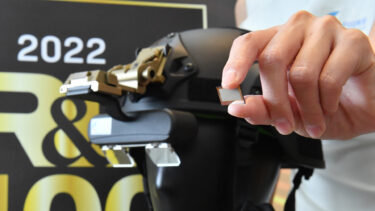Taiwanese institute shows super-bright MicroLEDs displays for slim AR headsets

A Taiwanese institute presents a new generation of MicroLED displays that are said to score with more colors, higher brightness and less power consumption.
Taiwan's most prominent high-tech research institution, the Industrial Technology Research Institute (ITRI), is introducing new high-resolution, full-color MicroLED displays for XR headsets. With their compact design, high brightness, and low-power consumption, they are expected to become part of the next generation of augmented reality devices.
MicroLEDs could be the display technology the XR industry is waiting for
MicroLEDs are considered by many the future of mixed reality displays. They are highly efficient, tiny, and consume little power. In addition, they can also be used on curved surfaces, which makes them particularly interesting for slim AR headsets.
Although the tech industry has long been positioning itself to buy up MicroLED startups or provide them with lucrative licensing deals, one crucial drawback is that the super displays are difficult to manufacture. More than fifty percent of all displays produced are defective, resulting in high costs.
Manufacturing is complicated, but is constantly being improved through intensive research. Only recently, a team from the University of Michigan announced a possible breakthrough in XR displays and promised more efficient production of MicroLEDs.
MicroLEDs from ITRI are claimed to be ten times brighter than the competition
Now the MicroLED Alliance, founded by the Taiwanese Industrial Technology Research Institute, is coming forward with a new product. It is supposed to support panel manufacturers in producing the next generation of AR displays.
The MicroLED displays presented offer a resolution of more than 2,000 PPI and a brightness of more than 20,000 nits (explanation). This makes them suitable for outdoor use and ten times brighter than displays previously used in smart glasses. Display and sensor functions are compactly integrated, which should ensure a high level of compatibility with other devices. The size of the MicroLED displays is less than 0.5 inches (1.27 cm).
The basis for XR headsets and AR vehicle displays
Power consumption is also said to be low at less than one watt. The institute uses heterogeneous integration technology, similar to semiconductor processes, to provide the microdisplays with a wide color gamut. MicroLED, CMOS and quantum dot color conversion layers are combined in a single panel.
ITRI announces its intention to offer MicroLEDs worldwide as a system-oriented industrial integration and manufacturing platform, effective immediately. According to Dr. Shih-Chieh Chang, general manager of ITRI's research laboratory in charge of the project, MicroLEDs are suitable as a basis for the development of AR displays in vehicles and XR headsets.
Note: Links to online stores in articles can be so-called affiliate links. If you buy through this link, MIXED receives a commission from the provider. For you the price does not change.